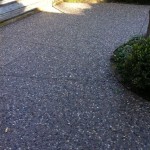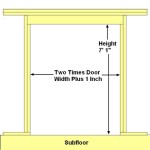How To Lay a Brick Patio Without Cement
A brick patio can add beauty and functionality to any outdoor living space. While traditional brick patios rely on mortar to bind the bricks together, there are alternative methods for laying a patio without cement. These techniques offer a charming, rustic aesthetic and, in some cases, can be easier to install. This article will explore several methods for laying a brick patio without cement, providing a comprehensive guide to planning, preparing, and executing this DIY project.
1. The Sand Base Method
The sand base method is a classic, time-tested approach for laying brick patios without cement. It relies on a deep layer of compacted sand to support the bricks and provide drainage. This method is ideal for patios with a gentle slope to ensure water runoff.
Preparing the Base
Before laying the bricks, it is crucial to prepare a solid foundation. Begin by excavating the area where the patio will be located, ensuring a depth of approximately 6 inches. Lay down a landscape fabric to prevent weeds from growing through the sand. Next, spread a 4-inch layer of compacted sand, ensuring it is level and even. This sand base will provide a stable and forgiving surface for the bricks.
Laying the Bricks
Once the sand base is prepared, you can begin laying the bricks. Start at the highest point of the patio and work your way down. Use a string line to guide the placement of the bricks, ensuring they are positioned in a straight line. Lightly tap the bricks with a rubber mallet to settle them into the sand. Leave a 1/4 inch gap between the bricks to allow for drainage and movement.
Edge Restraints
The edge restraints are essential for maintaining the shape and stability of the brick patio. Before laying the bricks, create a border around the perimeter with landscape timbers or bricks set in concrete. This border will prevent the bricks from shifting and help define the patio's edge.
2. The Gravel Base Method
The gravel base method offers a similar approach to the sand base method, utilizing a layer of gravel for drainage and support. The gravel provides a more stable base, particularly in areas with heavy foot traffic or uneven ground.
Laying the Gravel Base
After excavating the patio area, lay down a layer of landscape fabric to prevent weed growth. Spread a layer of gravel, typically 4-6 inches deep, ensuring it is evenly distributed and compacted. You may need to add more gravel over time to maintain the desired level.
Laying the Bricks
Similar to the sand base method, start laying the bricks at the highest point of the patio. The gaps between the bricks can be filled with sand or gravel to provide a more secure and aesthetically pleasing finish. You can also use polymeric sand, which hardens over time, creating a durable surface.
3. The Paver Base Method
The paver base method utilizes pre-made paver base material, which can be purchased in various forms. This method is often preferred for larger patios and those with challenging terrain. The paver base material provides a solid and level foundation for the bricks, allowing for easier installation.
Preparing the Base
After excavating the patio area, spread a layer of paver base material, typically 4-6 inches deep. Compact the material thoroughly using a plate compactor or a manual tamper to ensure a firm and even surface.
Laying the Bricks
With the paver base prepared, you can lay the bricks using the same techniques as the sand and gravel methods. The paver base provides a stable and level surface, allowing for easier alignment and installation of the bricks. Remember to leave a 1/4 inch gap between the bricks for drainage and movement.
4. The Dry-Lay Method
The dry-lay method is a simpler and less permanent approach to laying a brick patio without cement. This method involves laying the bricks directly on a prepared base of gravel or sand, without using mortar or adhesive.
Laying the Bricks
After laying the gravel or sand base, start laying the bricks directly on the surface. Use a rubber mallet to lightly tap the bricks into place. Similar to the other methods, leave a 1/4 inch gap between the bricks.
Stability and Maintenance
It is important to note that dry-laid brick patios are less stable than those laid with mortar. They may shift or become loose over time, especially in areas with heavy foot traffic or freeze-thaw cycles. Regular maintenance, including filling gaps with sand or gravel, is essential to maintain stability and appearance.
How To Lay A Patio From Reclaimed Bricks Alice De Araujo

How To Lay A New Brick Patio This Old House
How To Lay A Patio From Reclaimed Bricks Alice De Araujo

Ask The Builder Brick Patios Do Best On Concrete Slabs
How To Lay A Patio From Reclaimed Bricks Alice De Araujo

How To Lay A Brick Patio 14 Steps With S Wikihow

How To Build A Brick Patio This Old House

How To Build Patios Without Cement Fernandez Masonry

Building A Brick Patio

How To Lay A Brick Patio Ez Hang Door








